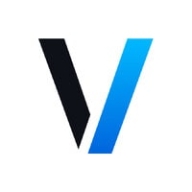

Find out what your peers are saying about SonarSource Sàrl, Veracode, Checkmarx and others in Application Security Tools.
| Product | Market Share (%) |
|---|---|
| Veracode | 5.4% |
| SonarQube | 17.9% |
| Checkmarx One | 10.2% |
| Other | 66.5% |
| Product | Market Share (%) |
|---|---|
| Virsec Security Platform | 0.3% |
| Wiz | 7.5% |
| Tenable Nessus | 5.2% |
| Other | 87.0% |

| Company Size | Count |
|---|---|
| Small Business | 69 |
| Midsize Enterprise | 44 |
| Large Enterprise | 115 |
Veracode is a leading provider of application security solutions, offering tools to identify, mitigate, and prevent vulnerabilities across the software development lifecycle. Its cloud-based platform integrates security into DevOps workflows, helping organizations ensure that their code remains secure and compliant with industry standards.
Veracode supports multiple application security testing types, including static analysis (SAST), dynamic analysis (DAST), software composition analysis (SCA), and manual penetration testing. These tools are designed to help developers detect vulnerabilities early in development while maintaining speed in deployment. Veracode also emphasizes scalability, offering features for enterprises that manage a large number of applications across different teams. Its robust reporting and analytics capabilities allow organizations to continuously monitor their security posture and track progress toward remediation.
What are the key features of Veracode?
What benefits should users consider in Veracode reviews?
Veracode is widely adopted in industries like finance, healthcare, and government, where compliance and security are critical. It helps these organizations maintain strict security standards while enabling rapid development through its integration with Agile and DevOps methodologies.
Veracode helps businesses secure their applications efficiently, ensuring they can deliver safe and compliant software at scale.
Virsec Security Platform offers advanced protection for applications by ensuring real-time detection and prevention of unknown threats. It integrates seamlessly across environments to provide robust, runtime security for critical workloads.
Specializing in memory-based attack prevention, Virsec ensures precise threat identification and mitigation with minimal impact on performance. Its deterministic approach identifies malicious activity with high accuracy, safeguarding against exploits and zero-day attacks. Trust is enhanced through transparency and actionable insights, making it a preferred choice for protecting sensitive applications.
What are the most important features of Virsec Security Platform?
What are the benefits and ROI of using Virsec Security Platform?
Virsec Security Platform is particularly beneficial in industries like finance, healthcare, and government, where data protection is critical. Its implementation enhances compliance with industry standards and offers peace of mind by protecting sensitive data against sophisticated threats. The platform's adaptability to diverse environments ensures consistent, reliable security across platforms, making it an ideal fit for industries demanding robust protection measures.
We monitor all Application Security Tools reviews to prevent fraudulent reviews and keep review quality high. We do not post reviews by company employees or direct competitors. We validate each review for authenticity via cross-reference with LinkedIn, and personal follow-up with the reviewer when necessary.